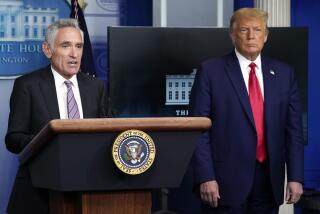Op-Ed: Memo to Stanford: Don’t attack coal, attack carbon — with a tax
- Share via
Last week, Stanford’s Board of Trustees announced that the university would not directly invest funds from its endowment in coal mining companies. Even the strongest advocates of this action acknowledge that it is a symbolic gesture with little direct effect on the coal industry or global greenhouse gas emissions. But if a university administration wants to take symbolic (or real) action on climate change, is coal divestment a wise choice?
Casting climate change mitigation as a moral crusade rather than a difficult public policy challenge is problematic. Mining and burning coal indeed lead to serious environmental impacts. Some of these can already be dealt with cost-effectively; others cannot — at least not yet. But unlike past targets of divestment — such as apartheid in South Africa and, arguably, tobacco companies — coal also produces something of great value, in the form of energy and energy-derived products that we all benefit from.
Those who claim that Stanford is not dependent on coal or coal-derived products are flat wrong. Coal is a major component in the production of the steel that goes into all the buildings sprouting up around the campus and the cement used to make the concrete that goes into them. Many other items purchased by Stanford are produced using electricity generated from coal either in the United States or, more likely, in China, where more than 80% of electricity comes from coal.
Yes, coal can be substituted in power generation with natural gas, which cuts greenhouse gas emissions by about half. In fact, the U.S. has achieved substantial reductions through just such substitution. But fast-growing Asian countries do not yet have the luxury of cheap natural gas extracted from shale. They will continue to consume increasing amounts of coal as the most affordable and available source of power.
Because coal’s negative attributes go hand in hand with important positive ones, and all of us are complicit in coal production and use, the moral equivalence with past divestment campaigns is a false one. In fact, I have serious concerns that making such an equivalence will only exacerbate the political divisions that have paralyzed Washington on climate.
Climate change policy is difficult because CO2-emitting processes are so thoroughly integrated into modern life, alternatives remain expensive and climate mitigation requires the nettlesome allocation of economic sacrifice around the world.
Painting “evil” fossil fuel companies as the principal obstacle to a better future only keeps us from staring these hard realities in the face. And, in the process, it may alienate the very people we need to be part of the climate policy solution.
How, then, can universities take action on climate change in a way that plays to their research and educational strengths while helping to move the climate debate toward real action?
There is wide agreement that the most cost-effective way to reduce the carbon content of the energy services we consume is to set a price for greenhouse gas emissions. The money raised from pricing carbon can be refunded to consumers so households are no worse off in aggregate. This policy is referred to as a “revenue-neutral carbon tax” (or fee), and it has drawn support from both sides of the political aisle.
In addition to having direct benefits for climate change mitigation, such a policy in the U.S. would send a powerful message of leadership to other large emitters that otherwise can take cover behind the relative climate inaction of the world’s most significant economy.
There are many important details that need to be worked out before such a policy can be implemented on a national scale. What better place to work them out than a university campus? So I issue this challenge to my own as well as any other university that wants to be a leader in meaningful climate action: Why not implement a university-wide, revenue-neutral carbon tax?
Here’s how it would work. Stanford (or your alma mater) would set a dollar-per-ton tax on all greenhouse-gas-emitting activities on campus. Students would pay an extra amount on their term bills for their emissions. Faculty and staff would have the tax taken out of their paychecks. Electricity use, consumption of campus transportation services, gas-emitting activities in research laboratories and buildings, and greenhouse gas emissions associated with waste disposal would all be assessed.
The tax could even be extended to include the carbon content of products purchased by the university, and by students and faculty at stores on campus. Just as in a national program, the carbon content of each product would need to be quantified and the corresponding carbon tax assessed on each purchase.
Stanford could then use the proceeds from this carbon tax to reduce the tuition and fees charged to students and to increase the salaries of faculty and staff in a revenue-neutral manner. Designing such a scheme would require addressing many substantial scientific, economic and political challenges. But solving these challenges should be right in the sweet spot for a major research university like Stanford.
The design and implementation of the tax would be a university-wide initiative involving students and faculty. The rich experience of the many who participate could subsequently be put to work helping to implement effective climate policies in other settings, including Washington.
Isn’t this what a major research university is supposed to do: engage in innovative research and teaching that positively and productively contributes to the public policymaking process?
Frank A. Wolak is director of the Program on Energy and Sustainable Development and a professor of economics at Stanford University.
More to Read
A cure for the common opinion
Get thought-provoking perspectives with our weekly newsletter.
You may occasionally receive promotional content from the Los Angeles Times.










